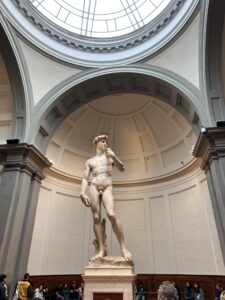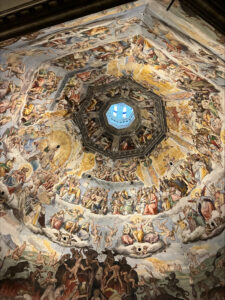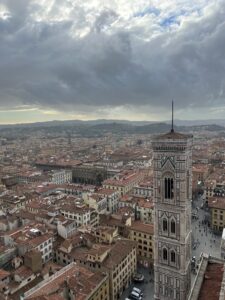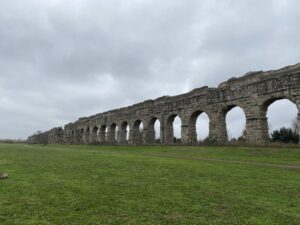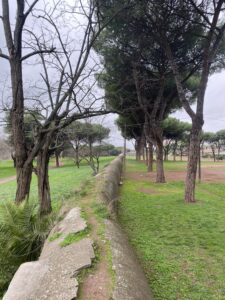Travel
Today, our class started our day by leaving Rome. We hopped on a high-speed train at 8:25am and got to Florence by 10! We enjoyed the beautiful mountain scenery and were served delicious drinks and snacks. When we got to Florence, we dropped off our bags at the hotel and went straight to the Galleria Dell ’Accademia Di Firenze. Next, we enjoyed lunch at the Florence market and then climbed the steps of the famous Duomo!
Florence
The class took the Florence bus system into the city center with our tour guide Leonardo. We saw the famous statue of David along with many other sculptures, paintings, and pieces of art. One of the many highlights was a demonstration of how replicas of statues were cast. Afterwards we explored the main shopping district and enjoyed a wide variety of foods from the central market. There was an astounding variety of foods, pastries, and beverages to choose from. After lunch, it was time to regroup at the Duomo for the great climb to the top!
Duomo
The Duomo is a cathedral that is known for its fascinating design and architecture. Construction for it began in 1296 by architect Arnolfo di Cambio and was completed in 1436 when Filippo Brunelleschi designed and constructed its famous dome. It is known for its impressive design and is the largest brick dome ever constructed. Today, our class got to climb 463 steps all the way up to the top of the dome. At the top, we were rewarded with stunning views over the entire city of Florence. One of the interesting features of the Duomo was the herringbone pattern of the brick work. This brickwork was a fascinating way to further reinforce the magnificent dome.
